The Orientalists
'The Pyramids Road, Gizah' by Edward Lear, British. Oil, 1873
As great art has the power
to change the lives of those who create it; so it has the power to change the
lives of those of us who view it.
The story of the Orientalists is a story of life. Of their lives and what they
strove to accomplish and what they loved; and the story of the people they met
and the places they recorded.
In July of 1798 Napoleon marched into Egypt with an army. He defeated the Turks
at the battle of the Pyramids, stayed for a few weeks and then was driven out
by the British. In the small amount of time that he was there he managed to do
what he did best: he changed everything.
Following him came first a trickle and then a torrent of westerners into the
Near and Middle East. The writers who wrote about their experiences and the artists
who painted what they saw became known as the Orientalists. They traveled
through Turkey, Iraq, Persia, Egypt, Lebanon, Palestine, Arabia and North
Africa. With time this became an art movement and today we call it Orientalist
art.
This movement spanned over a century and included hundreds of known artists.
Many of them were giants of the art world and created beautiful paintings that
seem almost photographic in detail.
Many of them took incredible risks and endured considerable hardship. Disease
was the greatest hazard and gun battles with bandits were commonplace. At other
times they were received with the greatest kindness and made lasting
friendships.
They came from all over the world: from England, France, Belgium, Germany,
Italy, Russia, America, and Australia. Some of them specialized in landscapes,
in archeological themes, or in people. Some of them were very religious and
created biblical scenes, some specialized in military history.
Others recorded the flora and fauna of the Near and Middle East. Encompassing
many different painting styles and political leanings, the only generalization
that can be made about them is that they were extremely diverse.
One common thread unites them; all who went were changed by the experience.
From Charles Gleyre lying on the deck of a ship in the Mediterranean so sick
that the captain and crew discussed if he were still alive or not, to Etienne
Dinet making his pilgrimage to Mecca, the journey affected these men deeply.
Some even died there and others remembered their travels with crystalline
clarity to the end of their lives. As great art has the power to change the
lives of the those who create it; so it has the power to change the lives of
those of us who view it.
Orientalist Art
The
Orientalist art movement, although a predominantly 19th century phenomenon
started in the time of the Renaissance and continued throughout the years
emerging in the 21st century seen through new forms and techniques. Themes and
places of interest to Orientalist artists span the geographical areas of Middle
Eastern and North African Islamic countries.
However,
Orientalism as an art movement cannot be associated with any particular
European country nor encapsulated in any of the local ‘schools’, as throughout
the centuries it was exercised by different Western cultures who documented
their experiences of extraordinary meetings with inhabitants of the ‘other’.
Orientalism
as a historical and cultural event has been uniting various aspects of cultural
life for a number of centuries, including literature, fine arts, architecture,
music, and philosophy, and has generated an exotic image within our
consciousness, one that has a right to its own existence.
 |
| 'Afternoon in Algiers' by Frederick Arthur Bridgman, American. Oil |
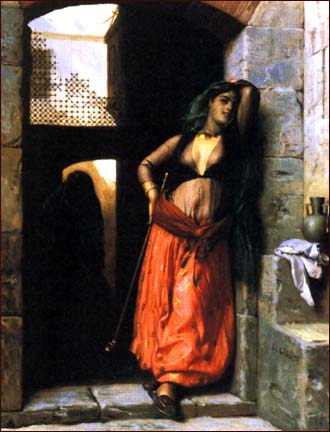 |
| 'An Almeh with pipe' by Jean-Leon Gerome, French. Oil, 1873 |
 |
| 'An Almeh with pipe' by Jean-Leon Gerome, French. Oil, 1873 |
 |
| 'Angelica' by Charles Gleyre, Swiss. Watercolor, 1834. |
 |
| 'Arab Girl' by Louis-Joseph Anthonissen |
 |
| 'Arms Dealers' by Giulio Rosati, Italian. Watercolor |
|
 |
| 'Bashi-Bazouk Chieftain' by Jean-Leon Gerome, French. Oil, 1881. |
 |
| 'Bashi-Bazouks singing' by Jean-Leon Gerome, French. Oil, 1868 |
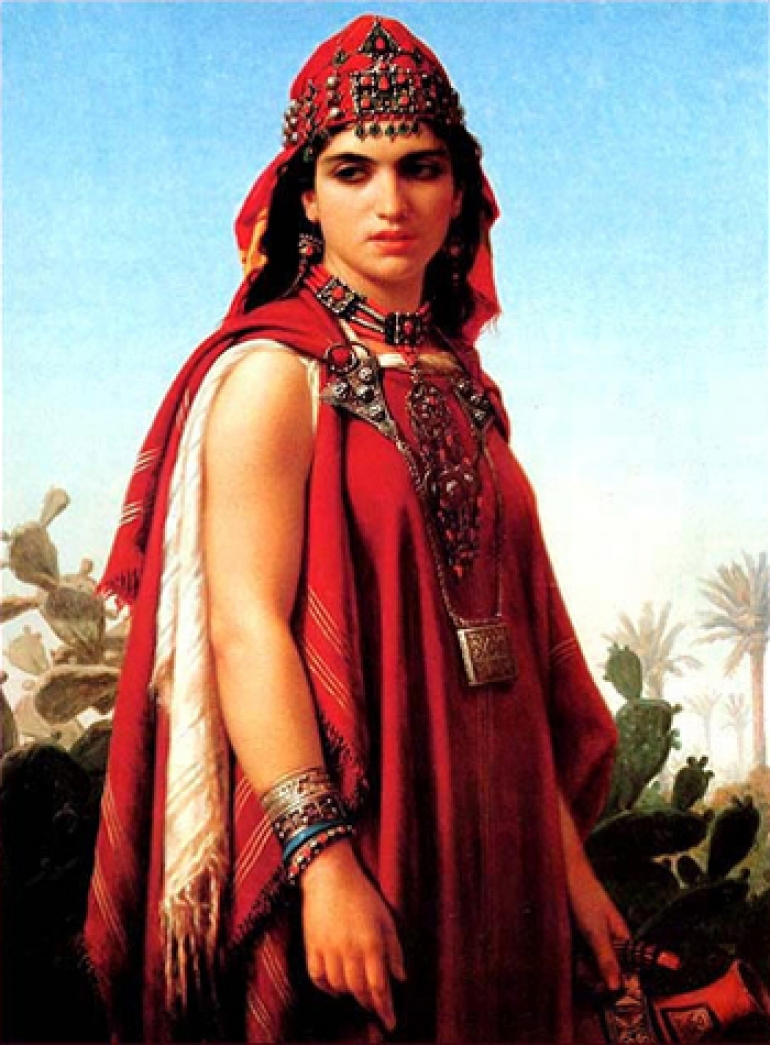 |
| 'Berber Woman' by Emile Vernet-Lecomte, French. Oil, 1870 |
 |
| 'Bride arriving in a village, Biskra, Algeria' by Philippe Pavy, French. Oil, 1889 |
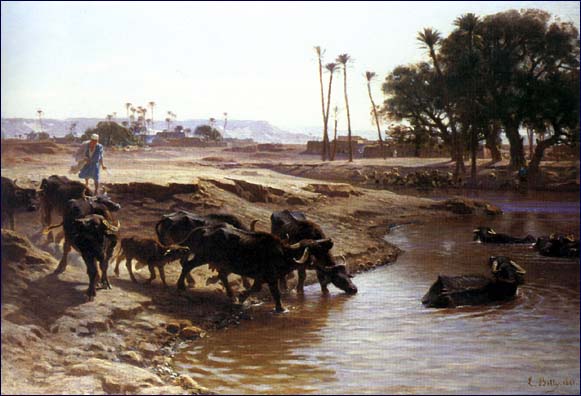 |
| 'Buffaloes bathing in the Nile' by Leon Belly, French. Oil, 1861 |
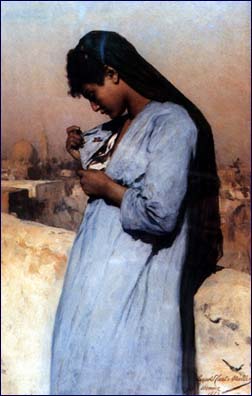 |
| 'Egyptian girl with a butterfly' by Leopold Carl Muller, Viennese. Oil, 1885 |
 |
| Fumee d'Ambre Gris' by John Singer Sargent, American. Oil, 1880 |
 |
'Girls dancing and Singing' by Etienne Dinet, French. Oil, 1902
| | | | | | | | | | | | | | | | | | | | | | | | | | | | | | | | | | | | | | | | | | | | | | | | | | | | | | | | | | | | | | | | | | | | | | |
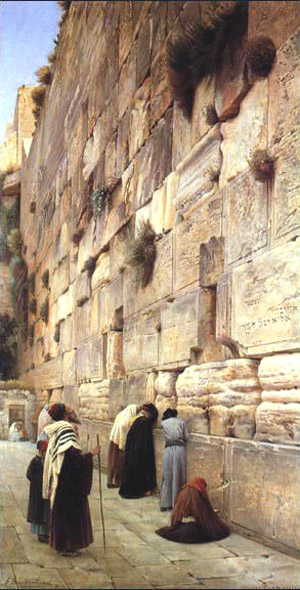 |
| 'Lament of the Faithful at the Wailing Wall, Jerusalem' by Gustav Bauernfeind, German. Oil, 1890 |
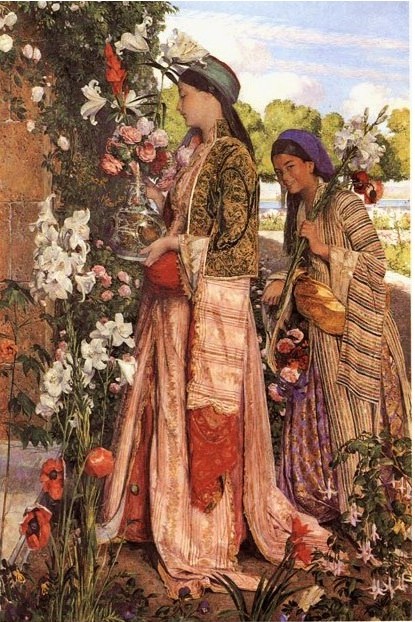 |
| 'Lilium Auratum' by John Frederick Lewis, British. Watercolor, 1871 |
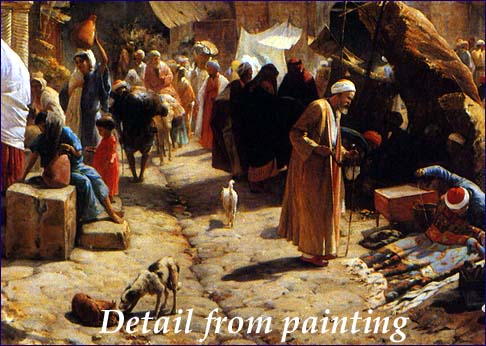 |
| 'Market in Jaffa' by Gustav Bauernfeind, German. Oil, 1887 |
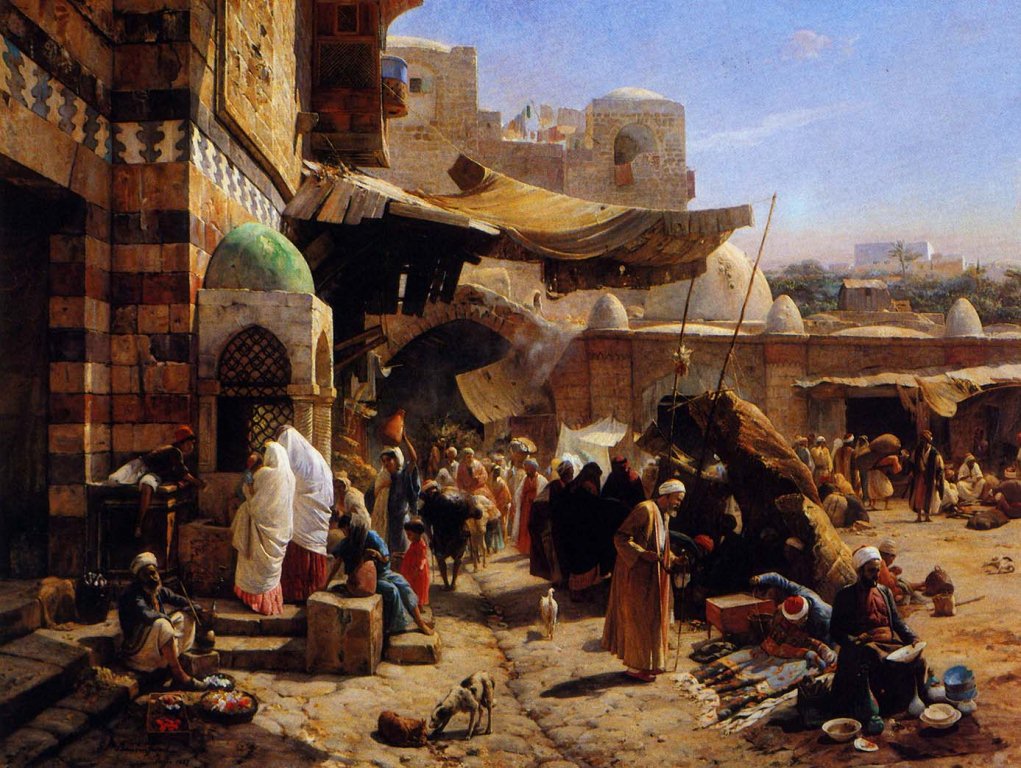 |
| 'Market in Jaffa' |
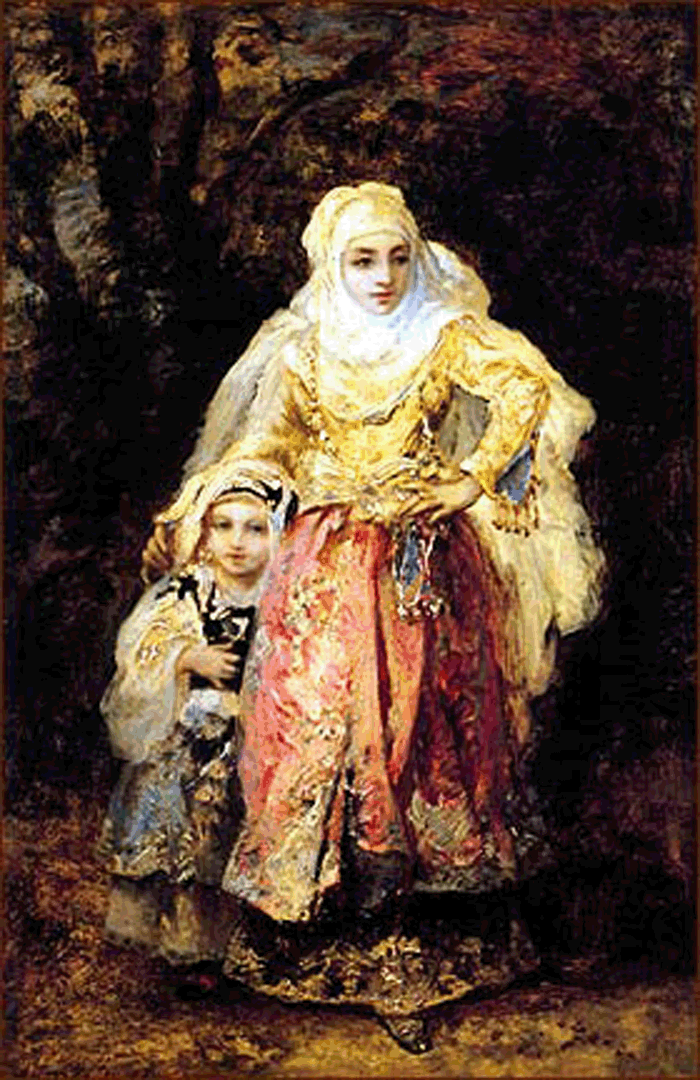 |
| 'Oriental Woman and her Daughter' by Narcisse Diaz, French. Oil, 1865 |
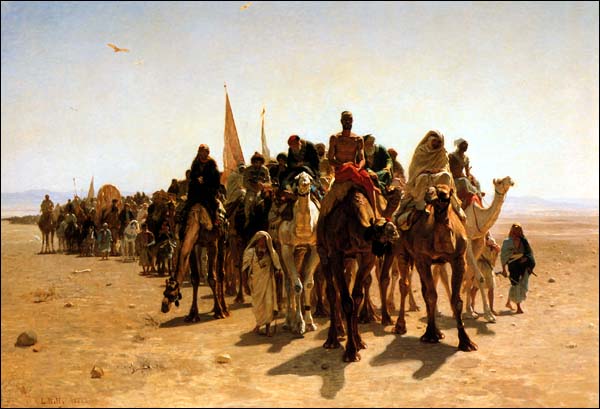 |
| 'Pilgrims going to Mecca' by Leon Belly, French. Oil, 1861. |
 |
| 'Pipe smoker' by Charles Lefebvre |
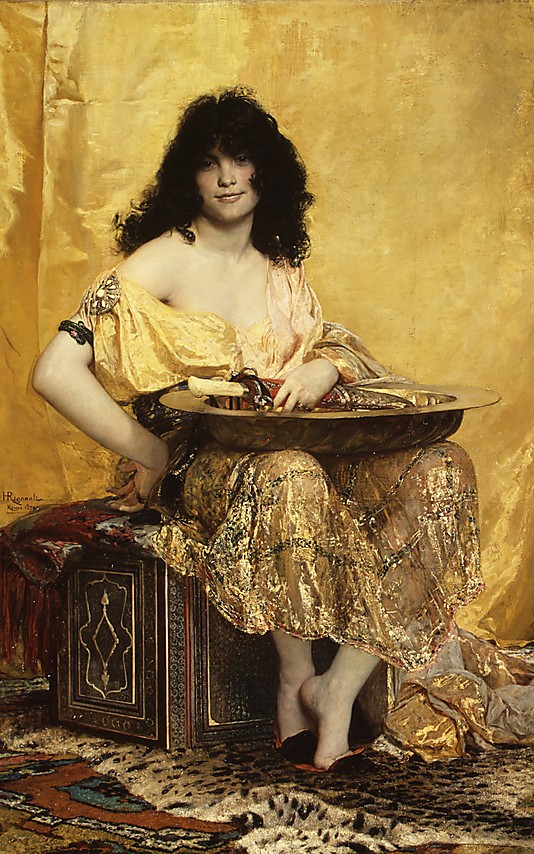 |
| 'Salome' by Henri Regnault, French. Oil, 1870 |
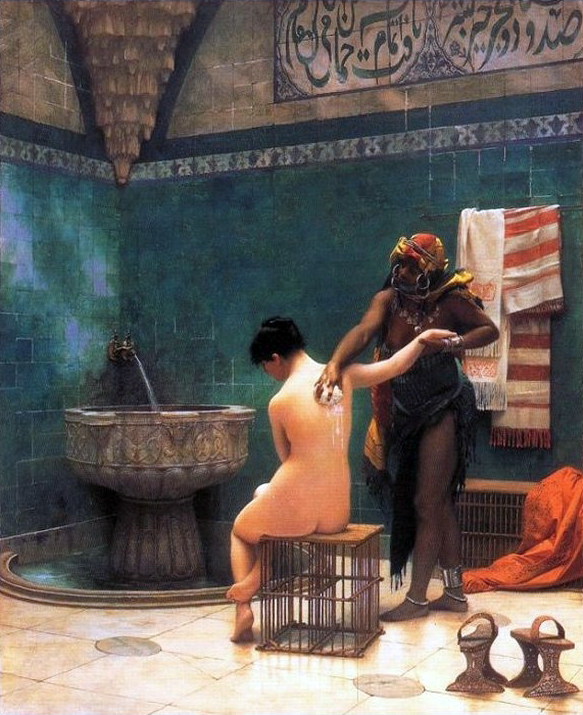 |
| 'The Bath' by Jean-Leon Gerome, French. Oil |
 |
| 'The Cedars of Lebanon' by Edward Lear, British. Oil, 1862 |
 |
| 'The Jewish Wedding' (After Delacroix) by Auguste Renoir, French. Oil, 1875. |
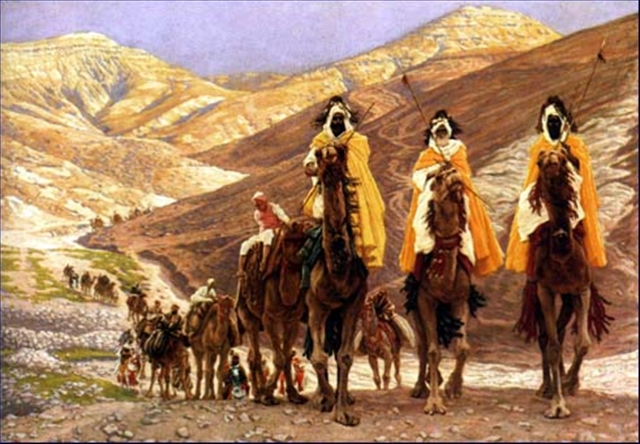 |
| 'The Journey of the Magi' by James Tissot, French. Watercolor, 1894 |
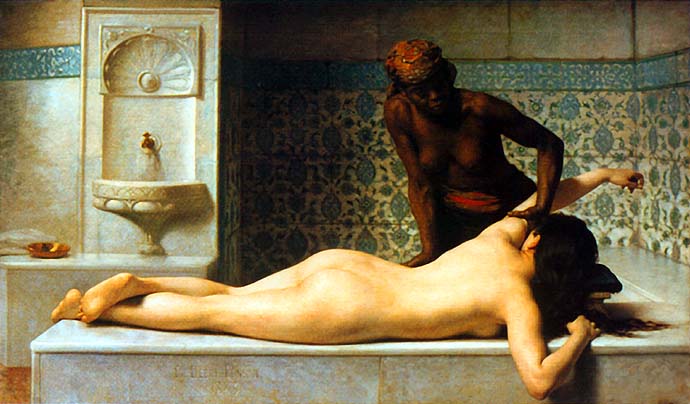 |
| 'The Massage' by Bernard Debat-Ponsan, French. Oil, 1883. |
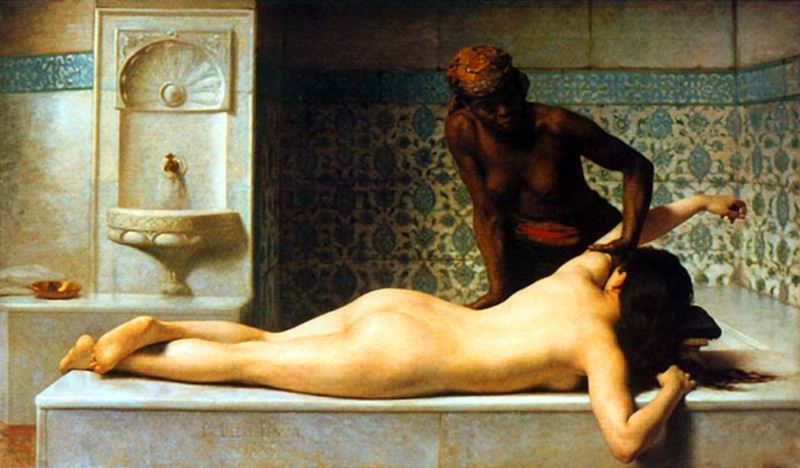 |
'The Massage' by Bernard Debat-Ponsan
|
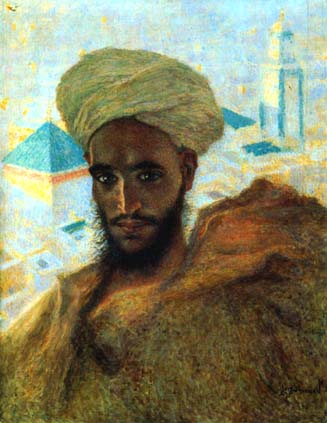 |
'The Moroccan' by Lucien Levy-Dhurmer, Algerian. Oil, 1900.
|
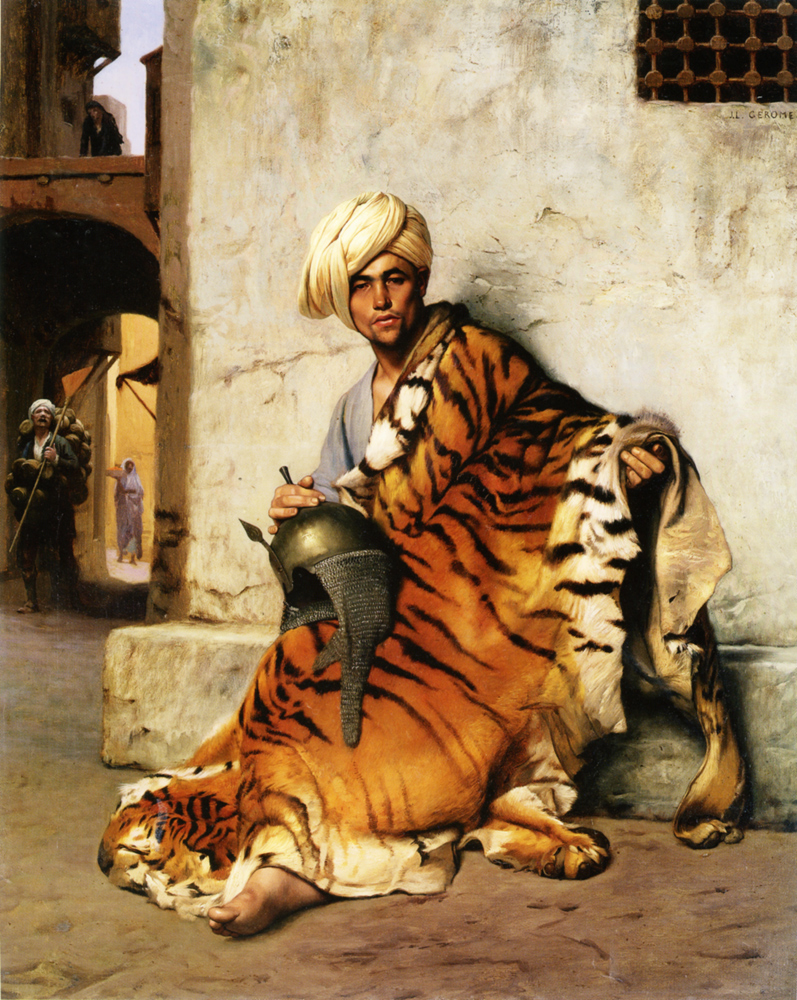 |
'The Pelt Merchant' by Jean-Leon Gerome, French. Oil, 1869.
|
 |
'The Prayer at theTomb' by Ludwig Deutsch, German. Oil, 1898.
|
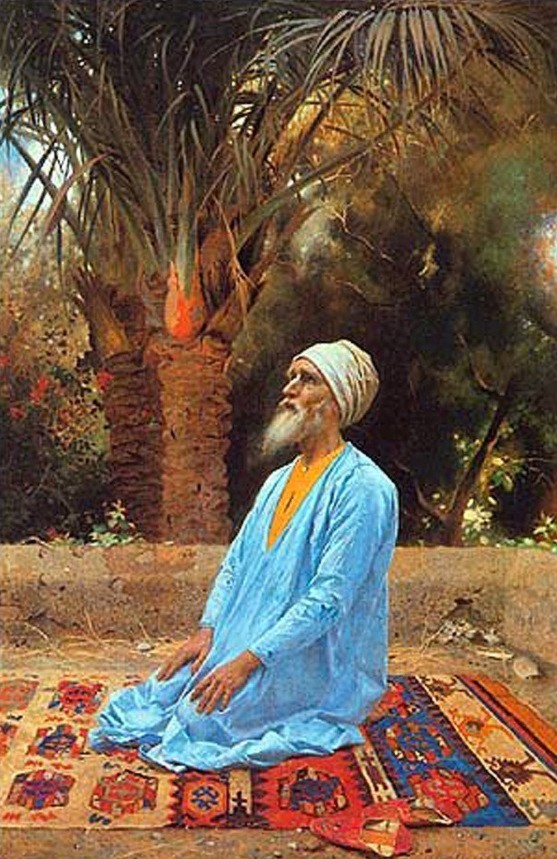 |
'The Prayer' by Van Der Ouderaa, Belgium. Oil, 1894
|
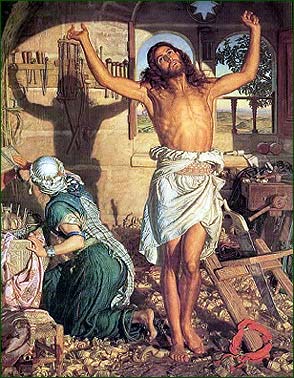 |
'The Shadow of Death' by William Holman Hunt, British. Oil, 1870 to 1873.
|
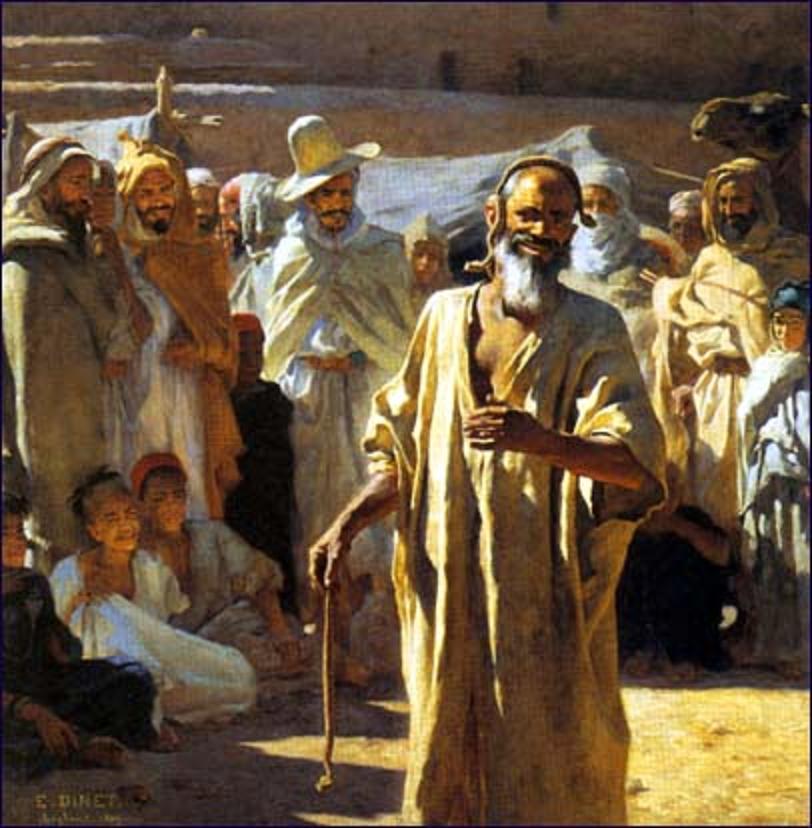 |
'The Snake Charmer' by Etienne Dinet, French. Oil, 1889
|
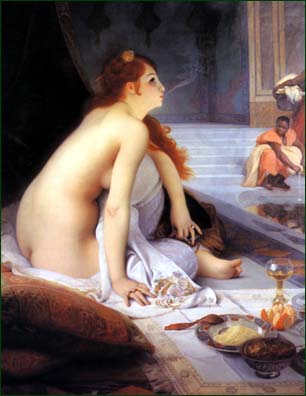 |
'The White Slave' by Jean-Jules-Antoine Lecomte de Nouy, French. Oil, 1888.
|
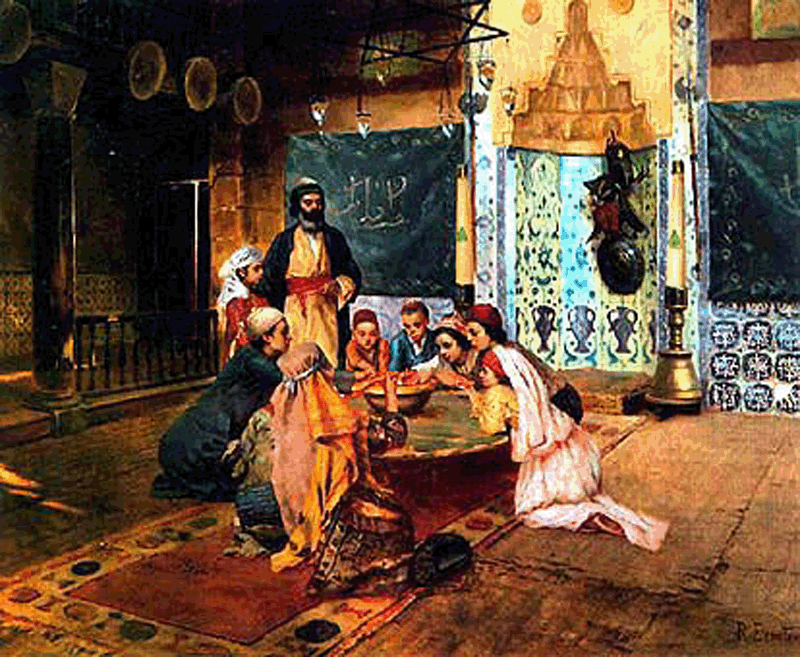 |
'The meal' by Rudolph Ernst, Austrian. Oil, 1900.
|
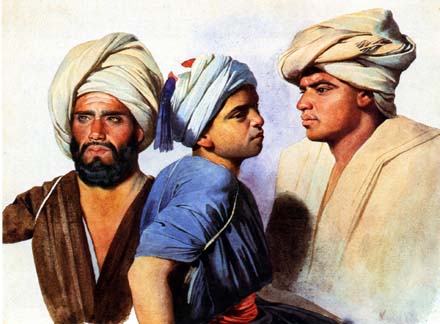 |
'Three Fellahs' by Charles Gleyre, Swiss. Watercolor, 1835.
|
 |
1HoshJohn Frederick Lewis, British. Watercolor, 1864
|
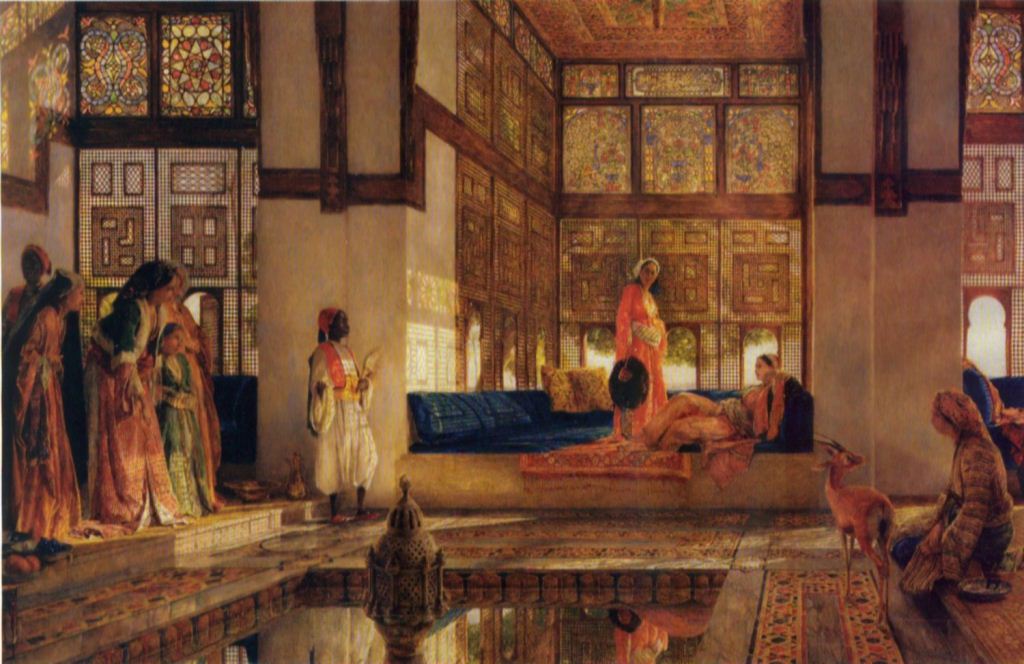 |
John_Frederick_Lewis_-_A_Lady_Receiving_Visitors_(The_Reception)
|
 |
739px-Théodore_Chassériau_-_Moorish_Dancers
|
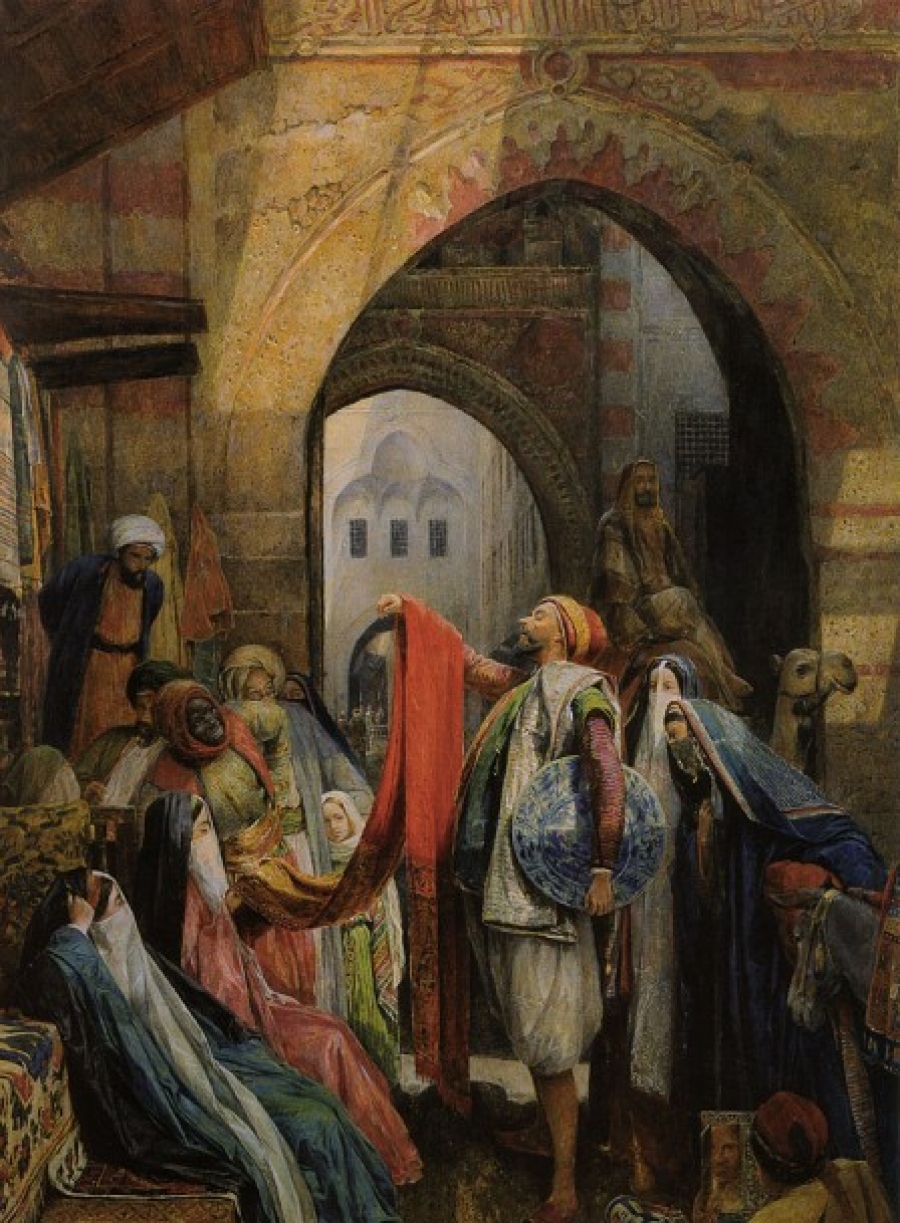 |
Basar-in-Kairo-von-John-Frederick-Lewis-25197
|
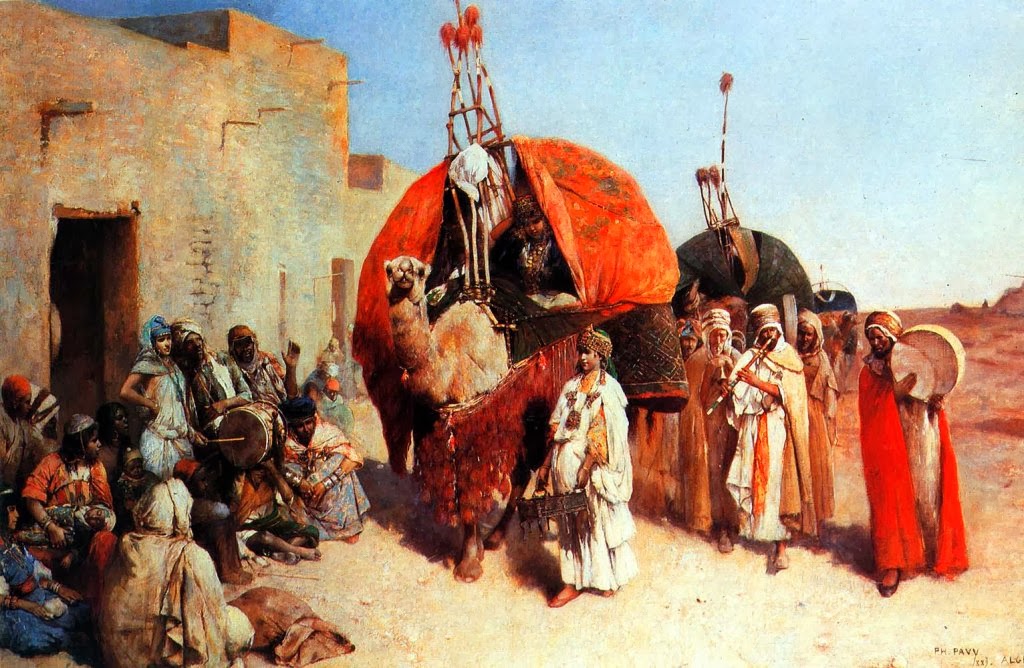 |
| Wedding Party |
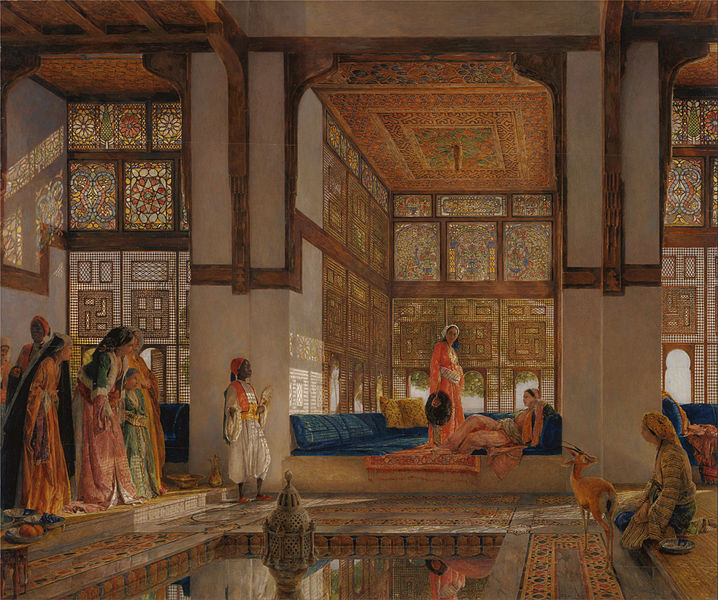 |
John_Frederick_Lewis_-_A_Lady_Receiving_Visitors_(The_Reception)
|
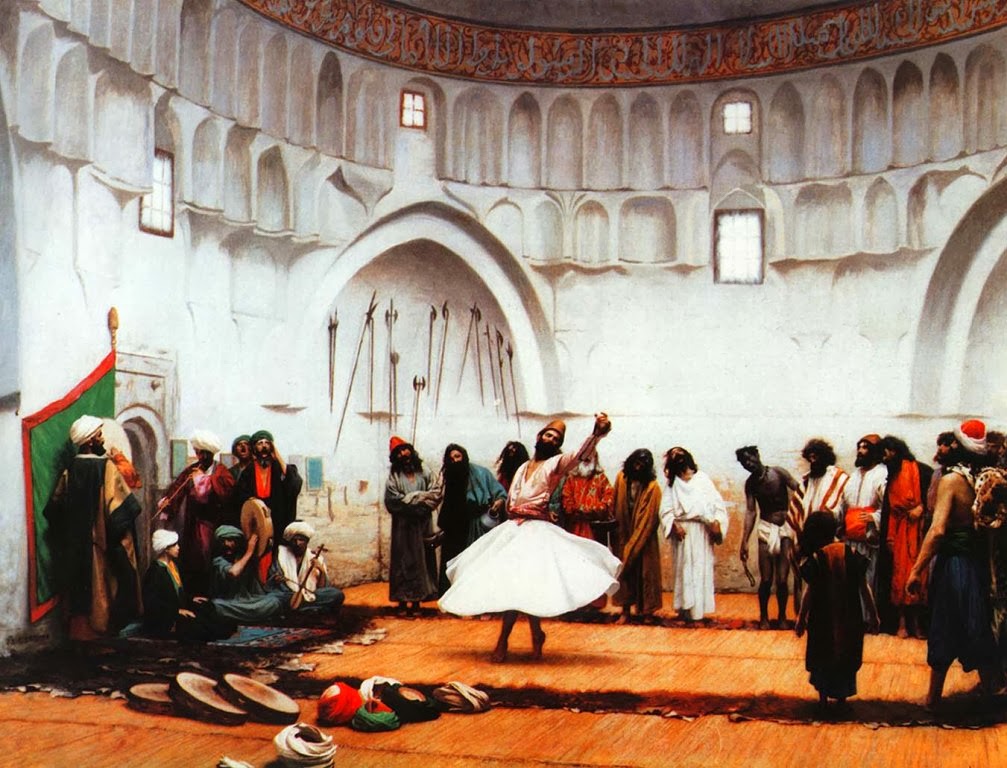.jpg) |
Detail from 'The Whirling Dervishes' by Jean-Leon Gerome, French. Oil, 1899.
|
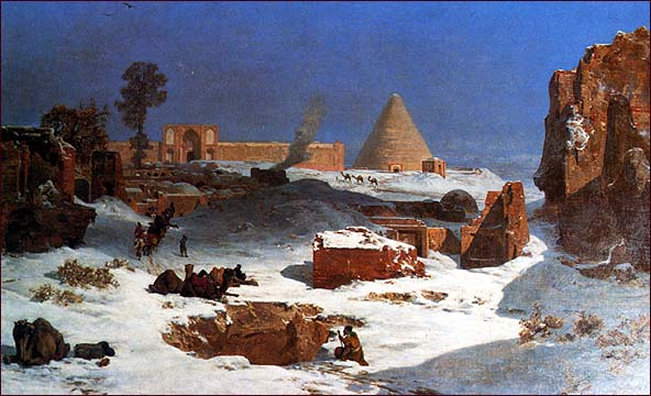 |
'Winter in Persia' by Jules Laurens, French. Oil, 1848
|
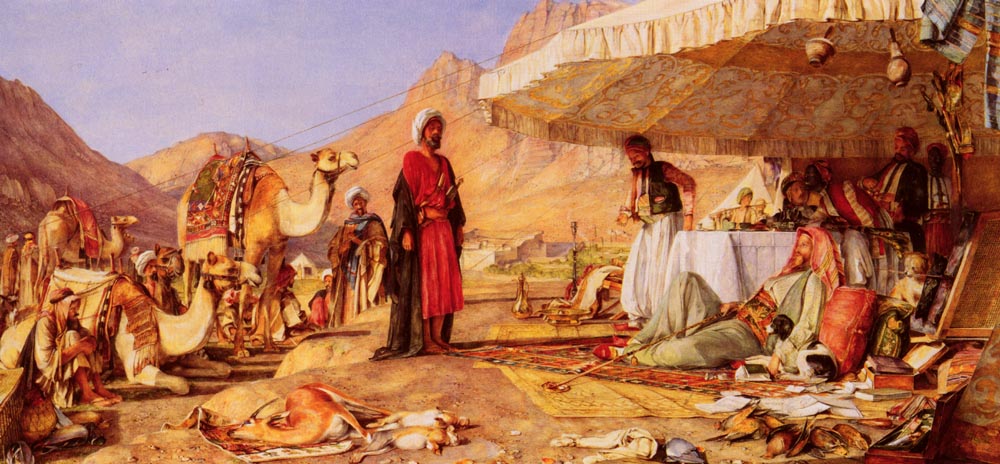 |
a_frank_encampment_in_the_desert_of_mount_sinai-large
|
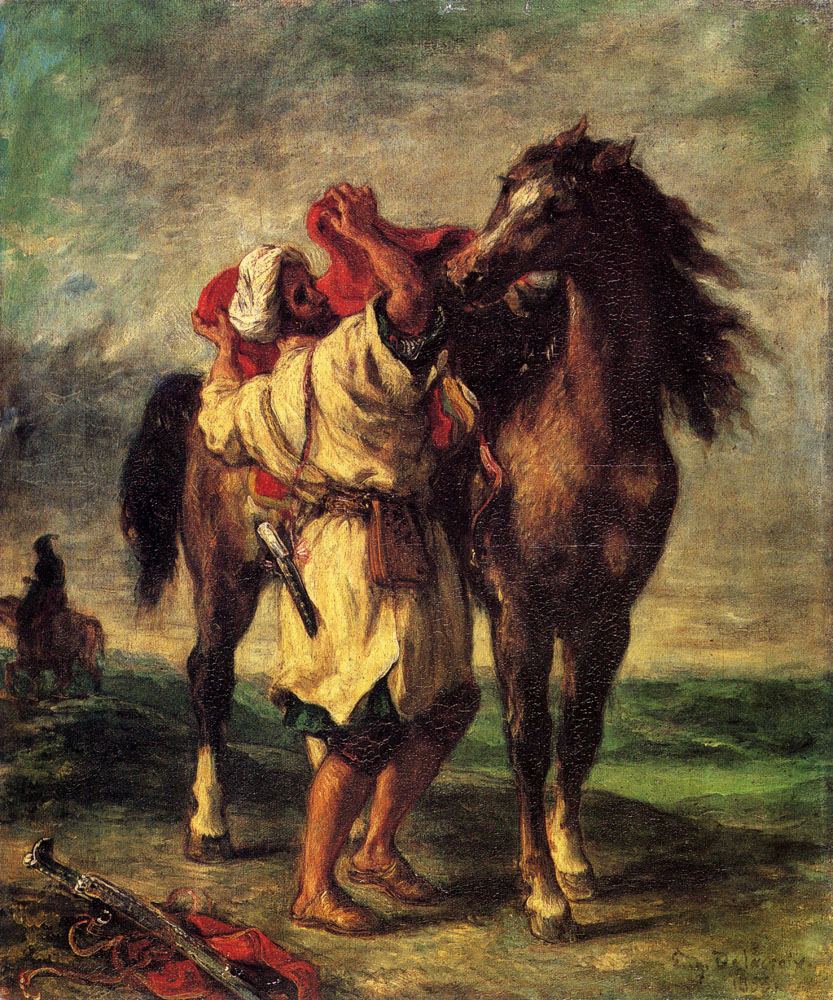 |
a_moroccan_saddling_a_horse-large
|
 |
a_view_of_the_street_and_morque_of_ghorreyah,_cairo
|
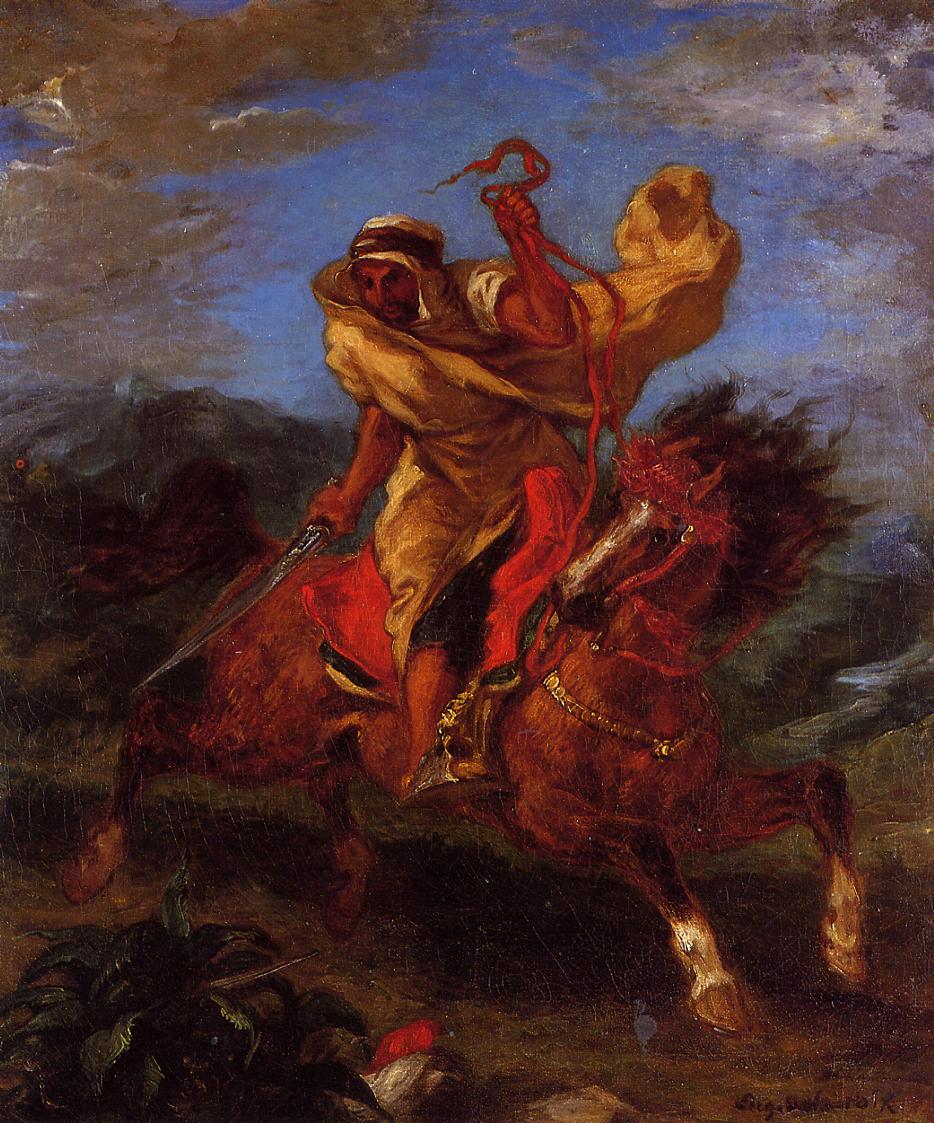 |
an-arab-horseman-at-the-gallop-1849(1)
|
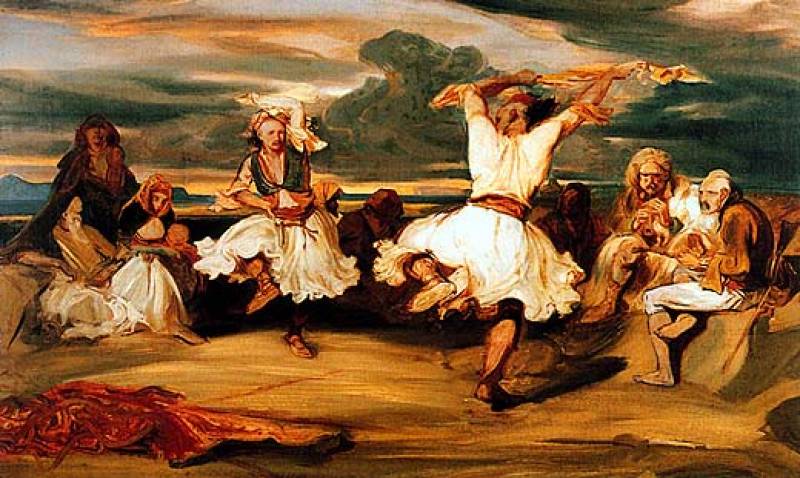 |
'Albanian Dancers' by Alexandre-Gabriel Decamps, French. 1835.
|
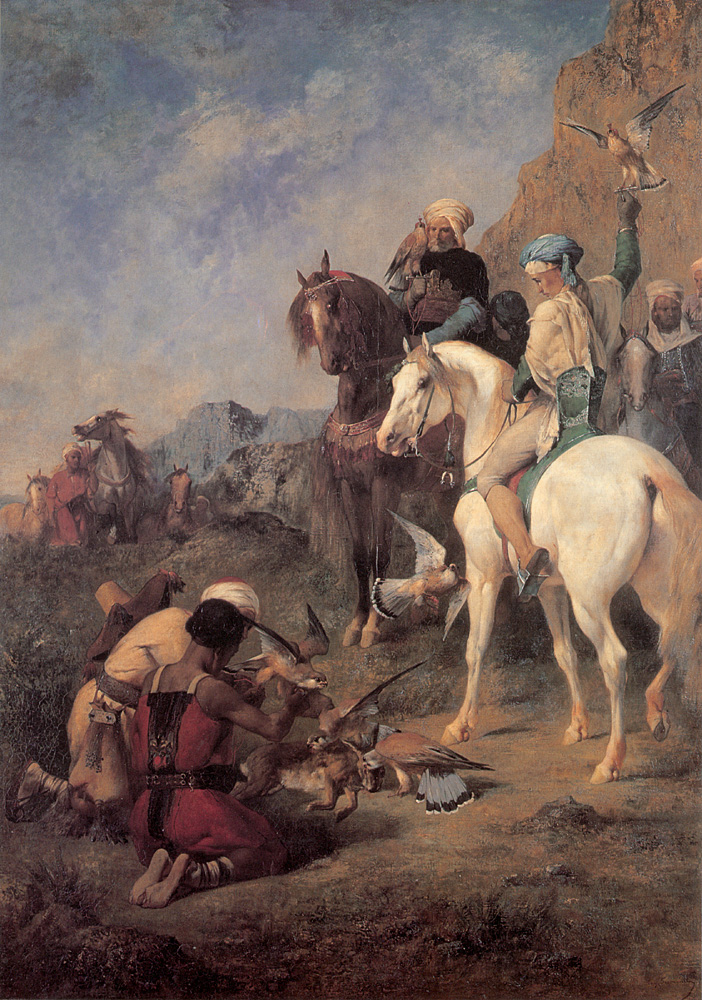 |
falcon_hunting_in_algeria-large
|
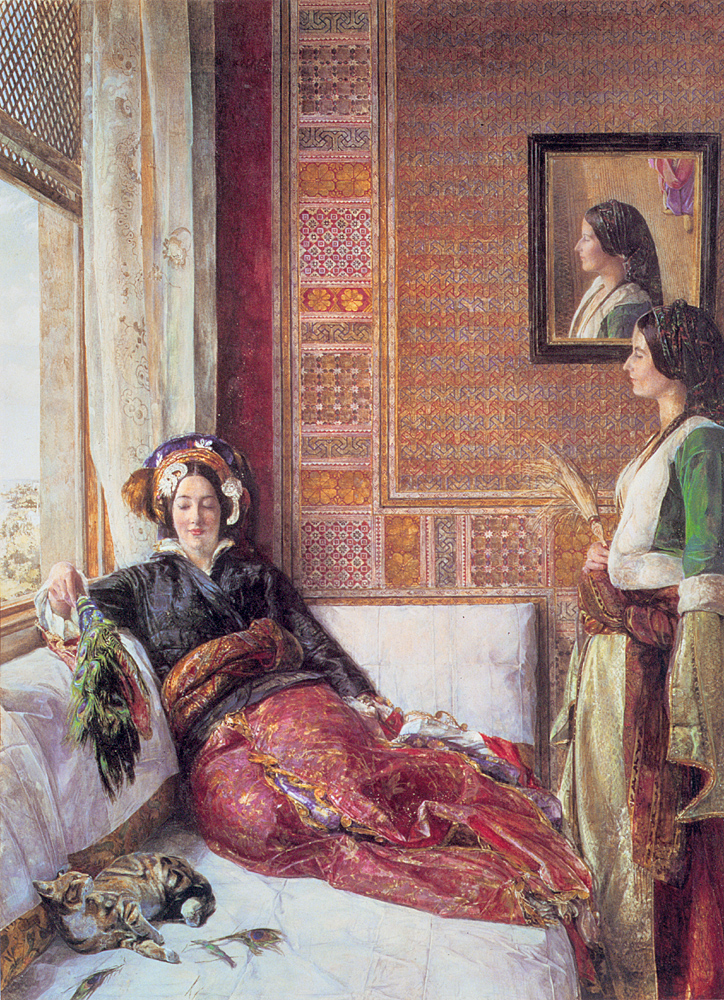 |
harem_life_in_constantinople
|
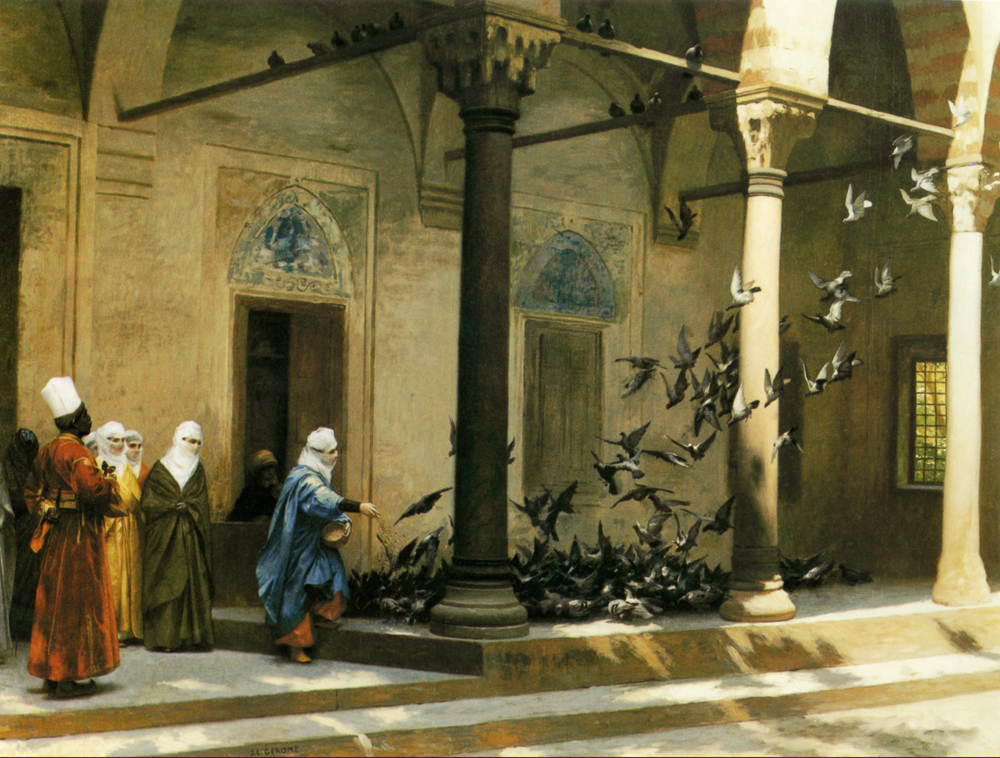 |
harem_women_feeding_pigeons_in_a_courtyard
|
 |
intercepted_correspondence
|
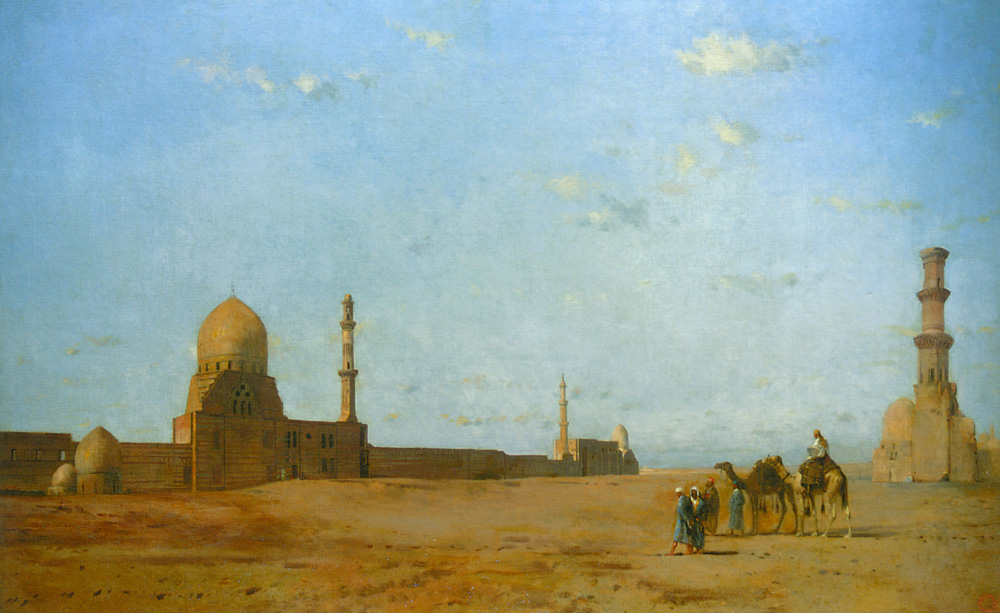 |
les_tombeaux_des_califes_au_caire
|
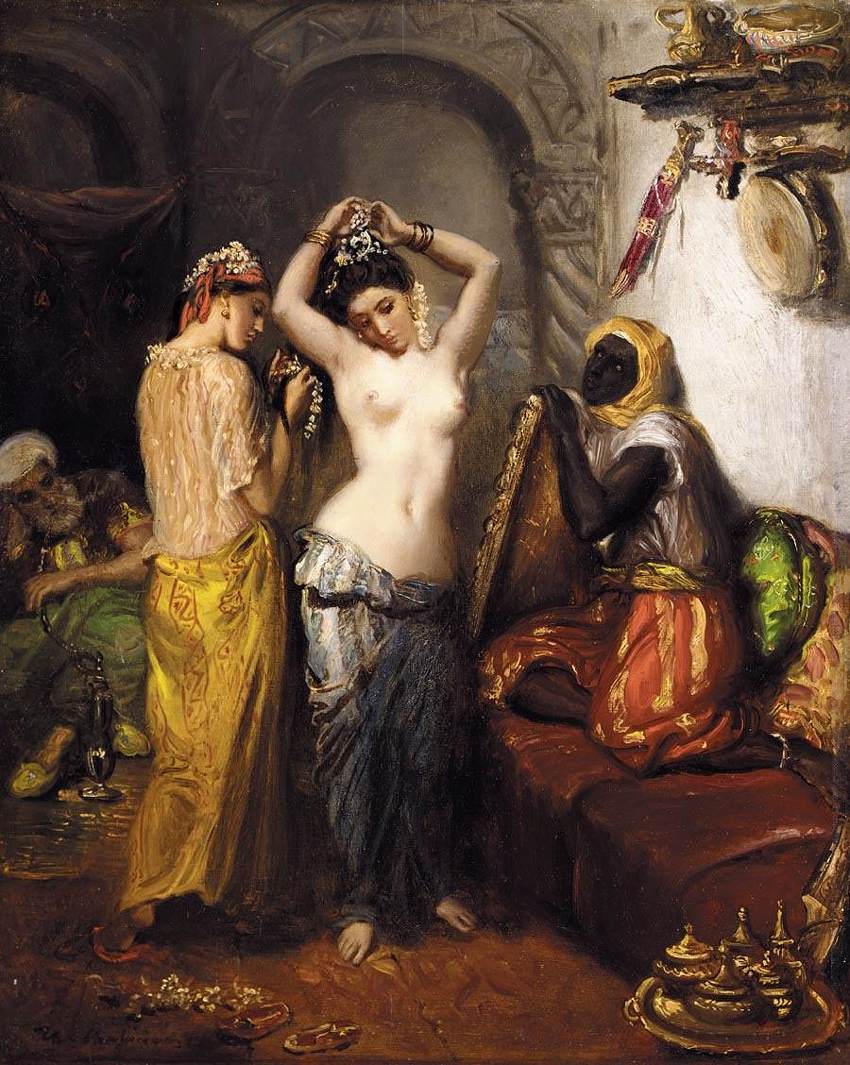 |
| Le Harem by Theodore Chasseriau |
 |
petit_taleb_(poete_arabe)
|
 |
| the_fanatics_of_tangier |
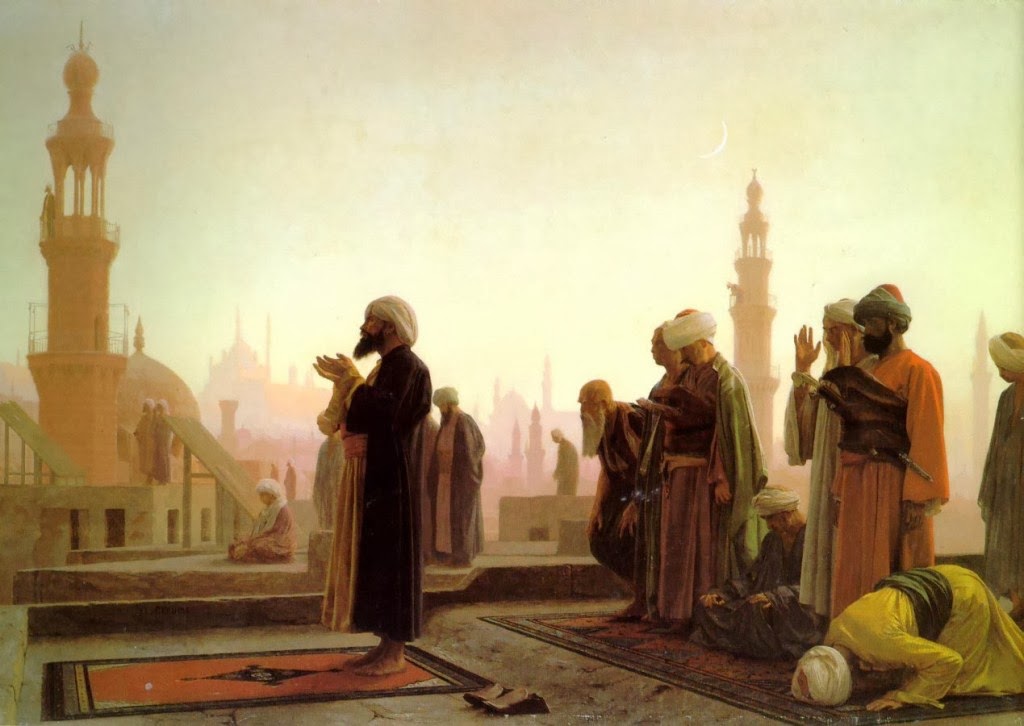 |
| prayer-in-cairo-1865 |
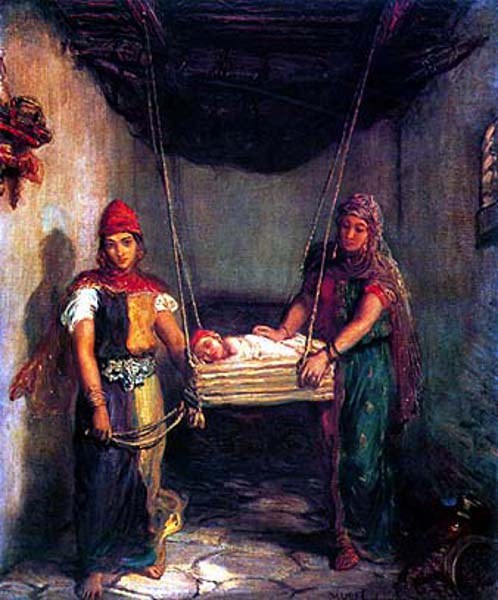 |
'Two young Constantine Jewesses rocking a Child' by Theodore Chasseriau, French. Oil, 1851
|
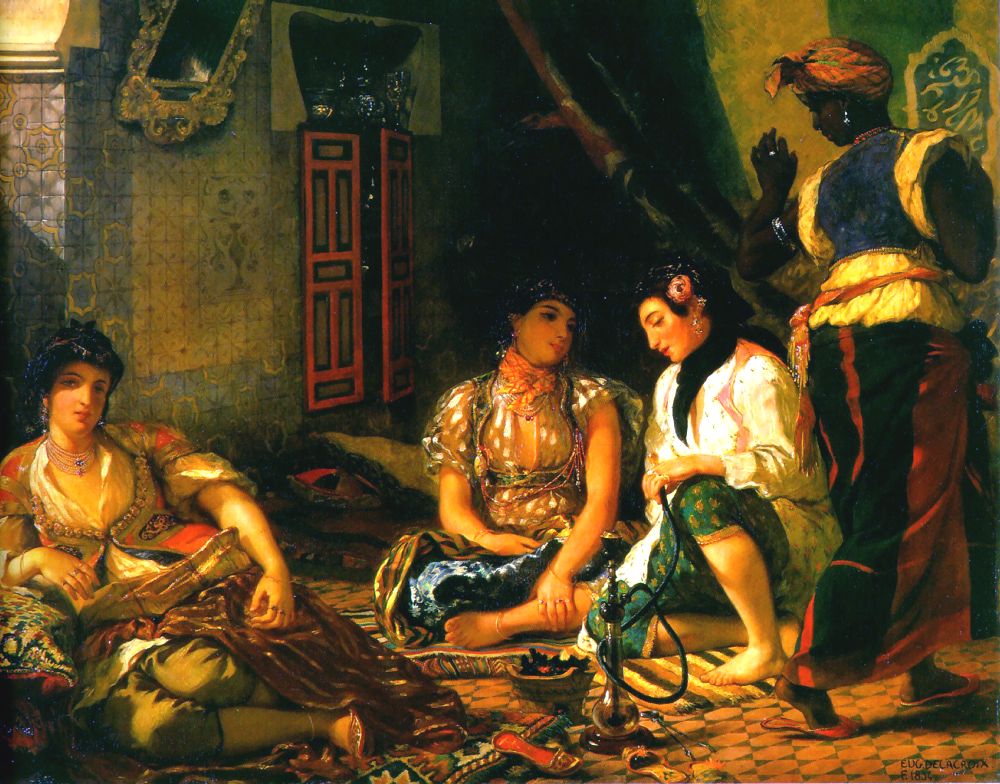 |
'Women of Algiers in their Room' by Eugene Delacroix, French. Oil, 1834.
|
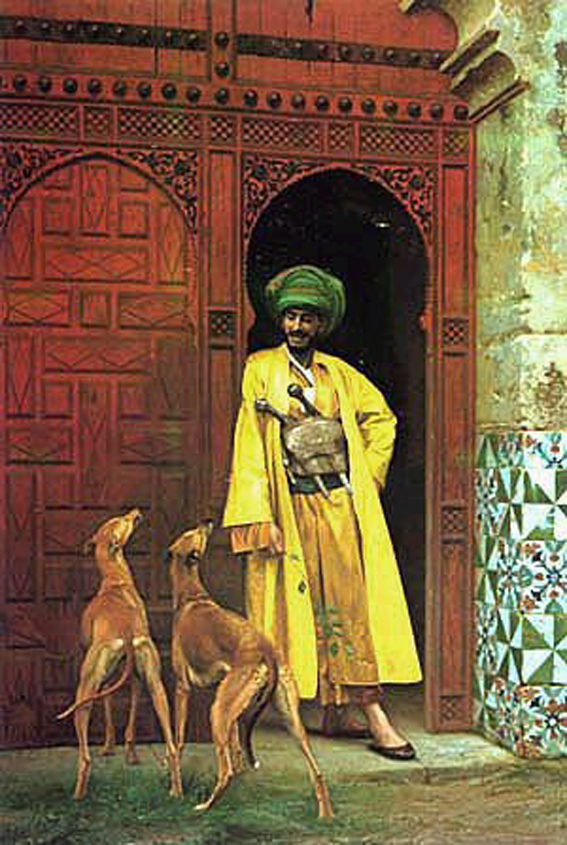 |
'Complicity' by Jean-Leon Gerome, French. Oil, 1875.
|
*original post Jan 9, 2009*
*orientalistart.net/*
*Art Renewal Center/*
*qma.com.qa*











































.jpg)













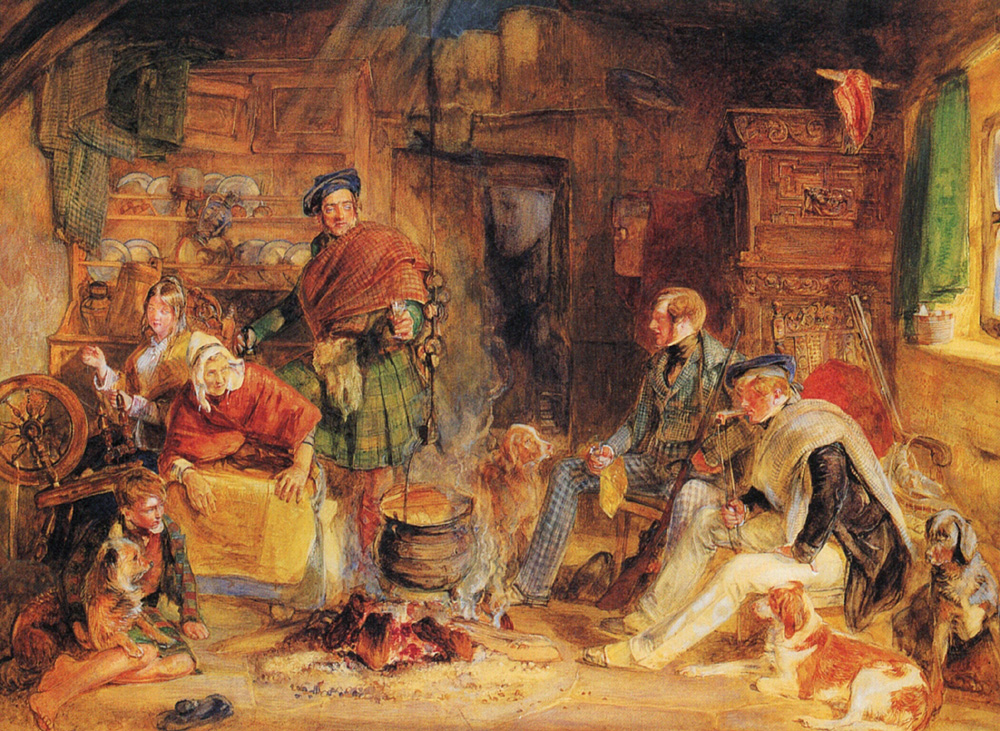














VERY Lovely pictures...
ReplyDeleteThanks for sharing
You're welcome, Sikander.
ReplyDeleteAlways glad to share
things of beauty.....
Thanks for your visit, too.
Wonderful paintings of a wonderful culture and people! Thanks for posting. God bless!
ReplyDeleteYou're welcome, Puchette...
ReplyDeleteI could have wished
these Westerner artists
took interest and set
their focus on the Far East, too.
Outstanding, love it!
ReplyDeleteThanks, D.
ReplyDeleteLove this painting! I can't express how beautiful the womans curves are. Wish there were more curvy models to paint. The media has effected the way women and men think. The curvy women I want to paint, all have low self-esteem about their bodies. This is true beauty, and true art. Artist, don't want to paint women who are bones. Thanks for sharing. Huggs-Shonna
ReplyDeleteYou're welcome, Shonna...
ReplyDeleteTimes-a-changing:
in the distant past,
Renaissance particularly,
full-bodied, robust images
of women were preferred
art subjects.
Must be for some reasons
that may they were more
realistic presentations
of average women who normally
went thru weight fluctuations,
pregnancy cycles, etc...
Nowadays, waif-like figures
get the attention,
which to me can be
unattainable dreamlands,
impractical and fanciful
representations of women...
Sublime.....
ReplyDeleteIts almost like a photo, great album mi amigo, muchas gracias as always....
ReplyDeleteDe nada... :-)
ReplyDeleteThat's a great oil painting
by French Etienne Dinet in 1902.
An image of two girls from
the Ouled Nail tribe.
Many ethnic groups like the Ouled Nail,
Copts, Berbers, and Jews
were undervalued in their own countries,
much like the American Indians
were in the United States.
Dinet spent considerable time
with these people and strove
to paint them with respect
and understanding
Human representation in art
was not allowed in Islam and so
the Orientalists provided us
with the first images we had of
people of the Middle East.
As so often is the case it takes
an outsider to appreciate
an ethnic or religious minority....
I love this particular
ReplyDeletepainting, too :-)
Paintings like this were created
to delight the viewers senses.
There is a quality of intimacy
that is very beautiful in this painting.
A perfect representation
of beauty in contrast...
the beauty of these two women's skin,
the sensuality and eroticism
creates a languid atmosphere
which the viewers can
lose themselves in.
romantic, erotic without exposing any assets.. eyes r indeed the sexiest of all organs of a lady
ReplyDeleteOh, yes on that.
ReplyDeleteA word,
a glance,
a sensual stance,
silence itself
communicates more & better.
Bareeverything often
is anti-climactic...
For instance, ask a man and
he will say pantyhose every time
because they look so
much better than bare legs (for a while...)
It's the thrill of the peel,
one piece at a time,
layer by layer....
agree with u .. a shining loving inviting eye is soo much more powerful than anything elese.. yr eyes i the profile picture for example
ReplyDeleteagree with u .. a shining loving inviting eye is soo much more powerful than anything elese.. yr eyes i the profile picture for example
ReplyDeleteagree with u .. a shining loving inviting eye is soo much more powerful than anything elese.. yr eyes i the profile picture for example
ReplyDeleteA glimpse into the past, North Africa and the Middle East. Given what is happening there today, the paintings seem to portray a gentler time, though it may only be a surface illusion, and to have been steeped in the culture back then, may have been far less romantic than what is portrayed. I don't know.
ReplyDelete~Manfred
For me, my immediate correlation would be that of the desert, sand, female subjects in robes or lack thereof, black princes, Arabian Nights, genies, rituals, opulence and sensuality, a different realm, something vast and mysterious... and yes, a portrayal of gentler times steeped in culture. But in reality, it is far more than this. There is so much here. It would be partial to view Orientalist art exclusively through these themes. It is a wistful pining for something that exists beyond the humdrum banality of our everyday lives. The Orient lore represents the images everything we’re not in our day-to-day: enigmatic, provocative and venturous; art that pervades a fascinating allure not even the dubious conjuration of politics, racism, colonialism, war, greed and sexism can dispel. Orientalist art hints at possibilities almost like a dream of how life should be because, like said: every pattern is clear, every rhyme exact, everything here is in place, and every goal near.
DeleteAs part of a complex, multi-layered histories that span centuries and thousands of personalities, visions, and ideas, there are more recent and more relevant events: we see the unending conflict (whether religious or land disputes) between the Israelis and Palestinians, the chaos in many modern Arab dictatorships such as Syria, Libya, Iraq, and Egypt which were essentially created by the British and French colonial powers. Given what is happening these days, there's enough widespread chaos and disillusionment, Orientalist art may offer a gentle reprieve.
Either factual or not in what we’re seeing — we feel the rich visuals in that distinctive kind of beauty. Taken one by one, the paintings are a meditation on time, a kind of epic Paradise Lost and Paradise Regained with small-scale heavens and hells. The paintings are exquisite. Like a time portal, it takes you back to unsullied times. One would note, even the sexy ones are modest by today's standards. Compared to the dull, mundane tints we’re accustomed to, its motif is emblazoned with color. The sky, the rising sun, the clouds, the trees, markets, the roads, harems – present one slice of the spectrum bathed with colors.
Besides the rich visuals and color, depending on what you see, there seem to be an audacious interpretation of duality in the themes: interplay between light and dark. It may only be black or white but relates to: for feminine vulnerability, it is white. Black for the mysterious and sinister — both exemplify the crux of Orientalism.
There is also visibly a kind of sensuality. For example: as someone pointed out somewhere,(Le Harem by Theodore Chasseriau) the unabashed, heavy-lidded sexuality mixes with regular Orientalist motifs: white, sexual femininity juxtaposed with black, threatening masculinity. Into this maelstrom of desire and voyeurism our own contemplation goes almost unnoticed; it seems natural, if not logical. But it would be unfair to view Orientalist art solely through its sexual politics. There are plenty of striking (John Singer Sargent's Fumée d'Ambre Gris) images with nary a harem in sight. One other example ('Pipe smoker' by Charles Lefebvre) -- His face here is impassive and unreadable; we can see his eyes but what is he thinking? We don’t know. This element of mystery is just as central to Orientalist ideas as color, vulnerability, opulence and peril.
DeleteThe Orient is a vast land with panoply of different languages, environments, cultures, religions, folktales and myths. Yet, we can again have a feel of that bygone era; all can experience what is fundamentally different, no doubt in part a response to The Orientalists.